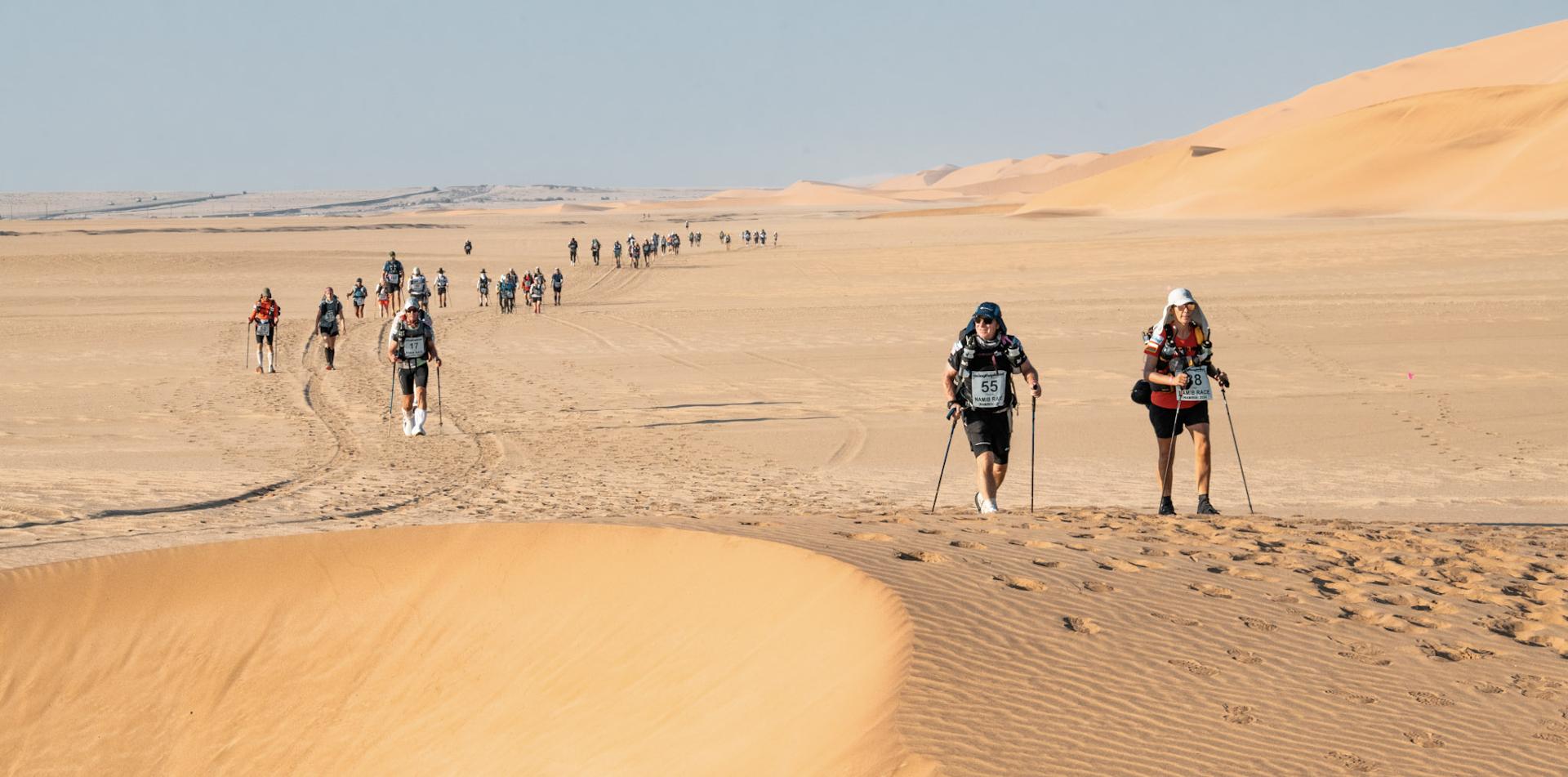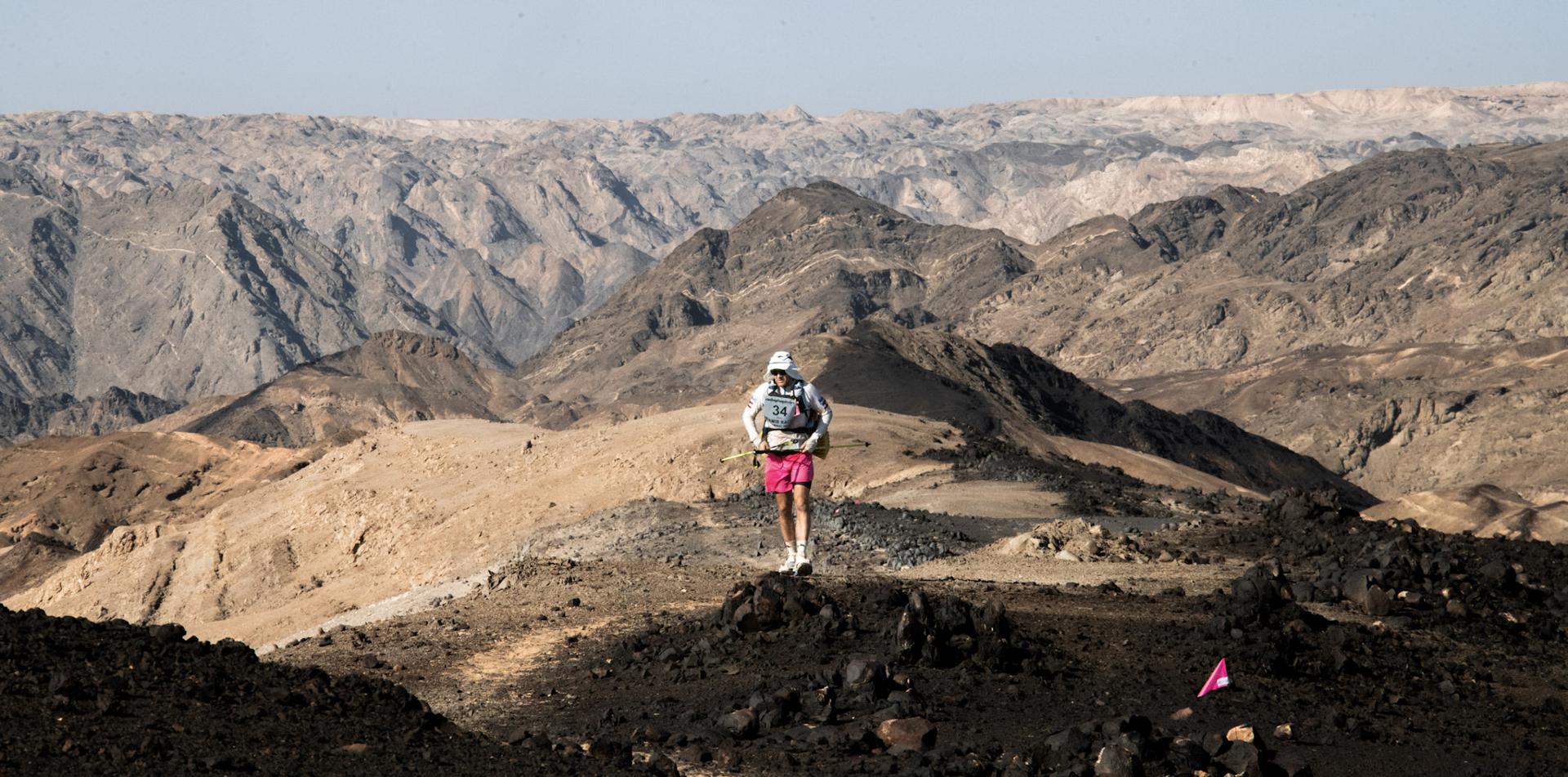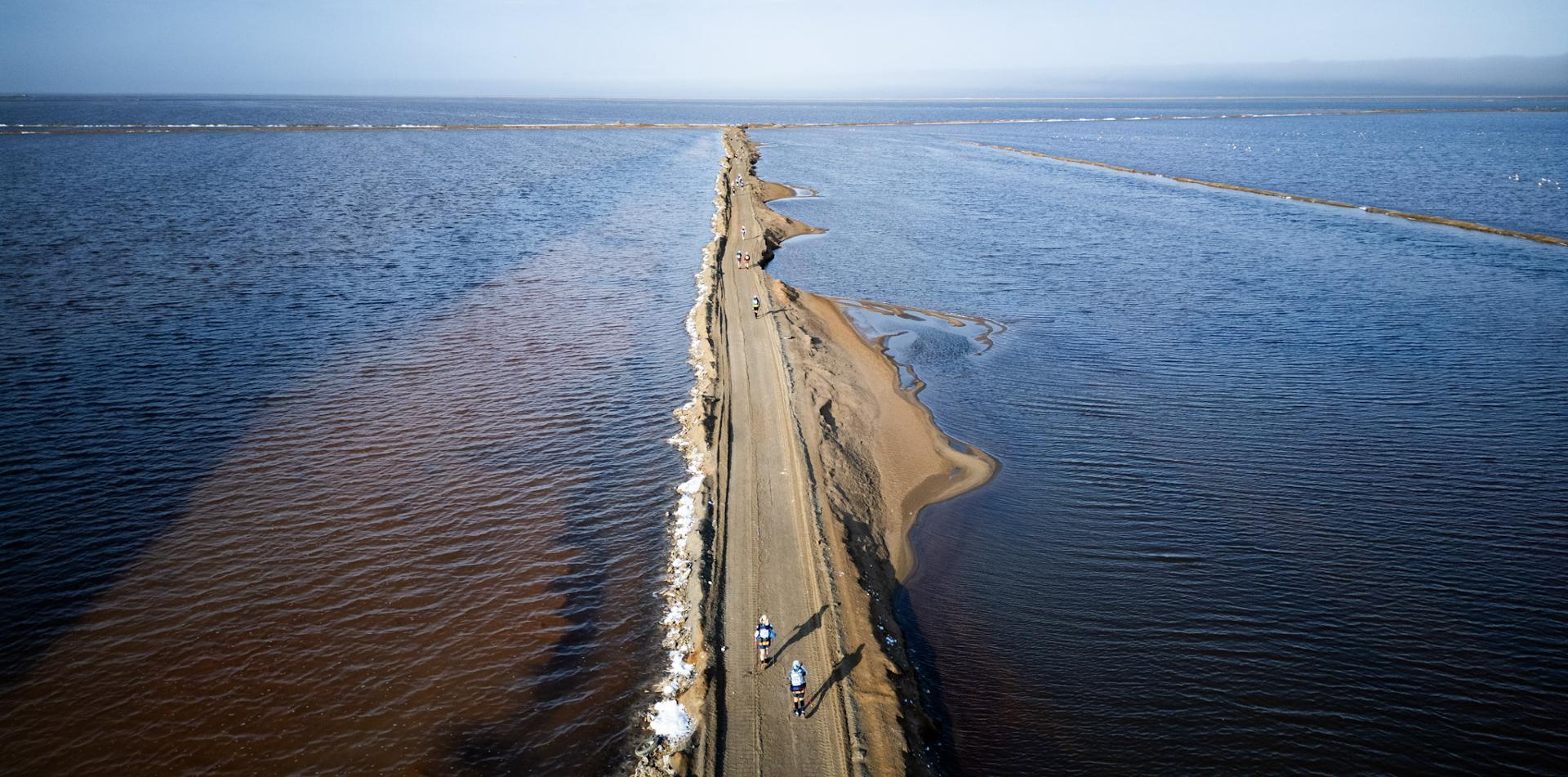RACE INFO

RACE INFO
The Namib Desert: All about the people
The Namib desert: the oldest desert in the world with the highest sand dunes in the world… but where are all the people? Namibia (Africa) is the second least populated country in the world! (Based on land size vs. population). Despite the small population it retains a great cultural diversity resulting from its many colonisations over the decades. It has been inhabited since pre-historic times by the San, Damara and nomadic Nama people.

Around the 14th century the Bantu people emmigrated to Namibia. Since then, the Bantu groups, mostly being the Ovambo people, dominated the country’s population now representing over half the population.
In Swakopmund, where our epic 250km adventure finishes, we meet traditional Herero Tribal women selling handmade wares and going about their business.

English, German and Afrikaans are the official languages of the country, but the most common languages are Oshiwambo, Khoekhoegowab, Afrikaans, RuKwangali and Otjiherero. Over 30 different languages overall are spoken throughout this culturally rich country and since Namibia's independence in 1990 their multi-party democracy governance looks to protect this invaluable heritage.
Namibians love football and cricket, with the Namibian National Rugby Team playing at 6 world cups! Mining, agriculture, manufacturing, and eco-tourism drive the economy in Namibia despite the fact it’s the driest country in sub-Saharan Africa.
So, who is welcome here and why are there so few people?
We chose Namibia because everyone is welcome here. From landing to departure every local we experienced was warm and full of love for both their country and its visitors. We are safe, Covid-free and invited to join traditional fire songs at Camp as we explore together these pristine natural wonders.

There are so few people and that’s exactly how we like it, of course, because of global history and tribal evolution. Humans migrated for water, food, language-connection and survival, much like ultra-running.
We seek and explore to challenge and grow ourselves while connecting to our natural world and each other. The people, animals and economy of this beautiful country thrive because when we each look out into the vast dry desert, we don’t see nothing… we see everything.
Learn more insights on the Namib Race and find out what our competitors personally experienced by heading to: Namib Race Blogs.







 Newsletter
Newsletter
 Online Store
Online Store
 Login
Login




